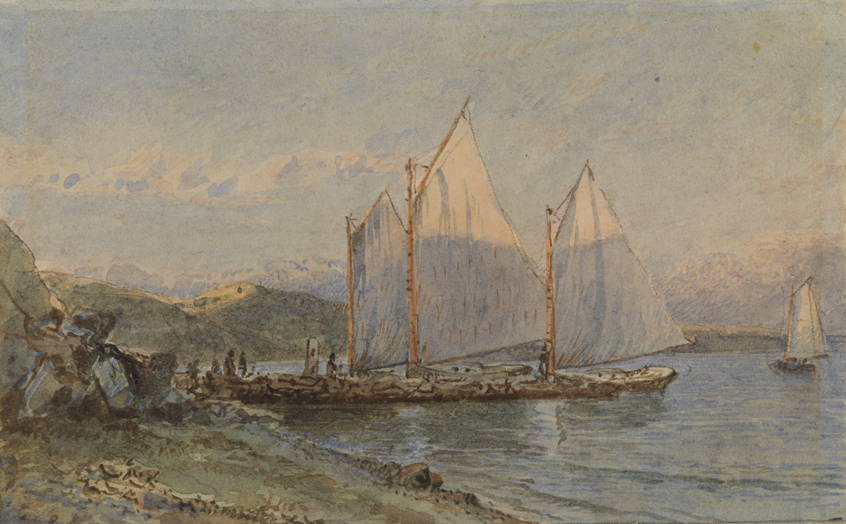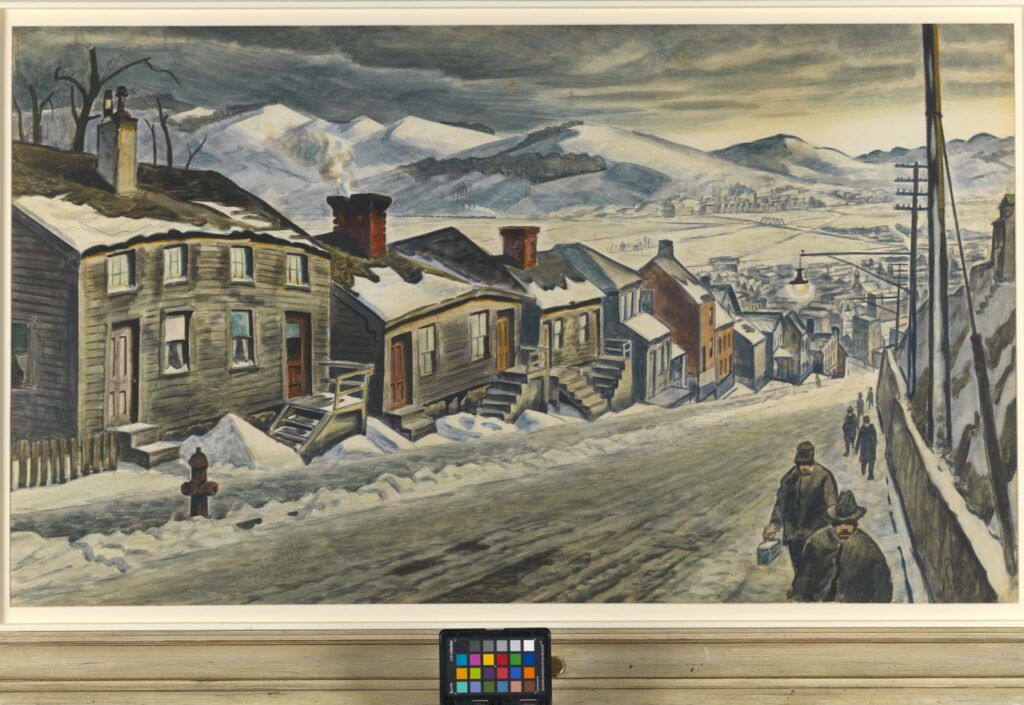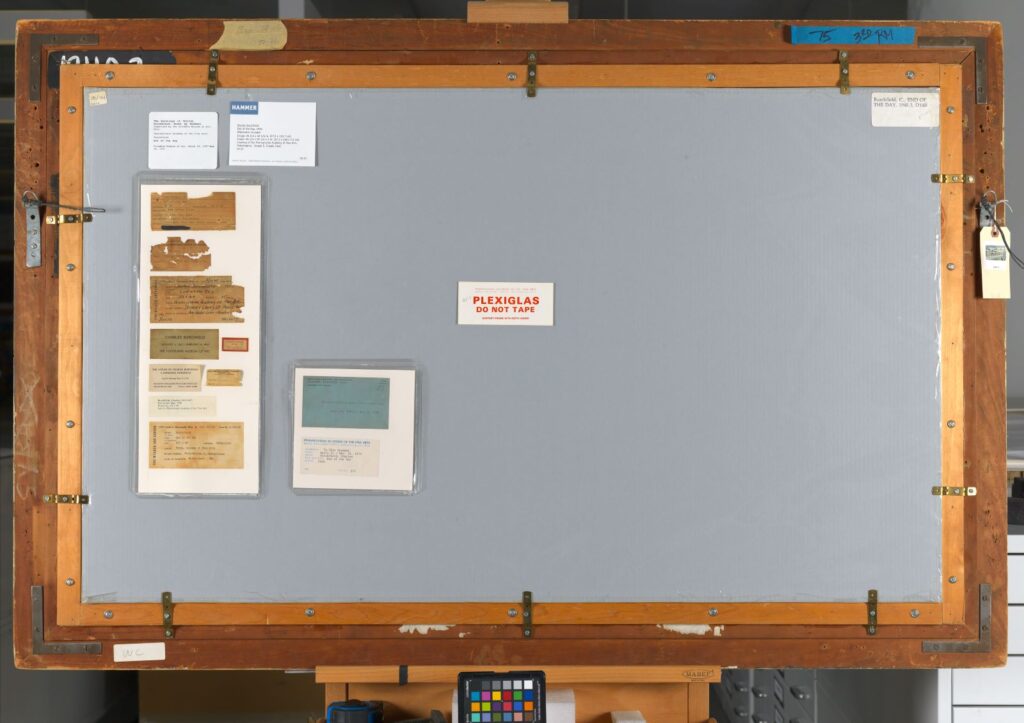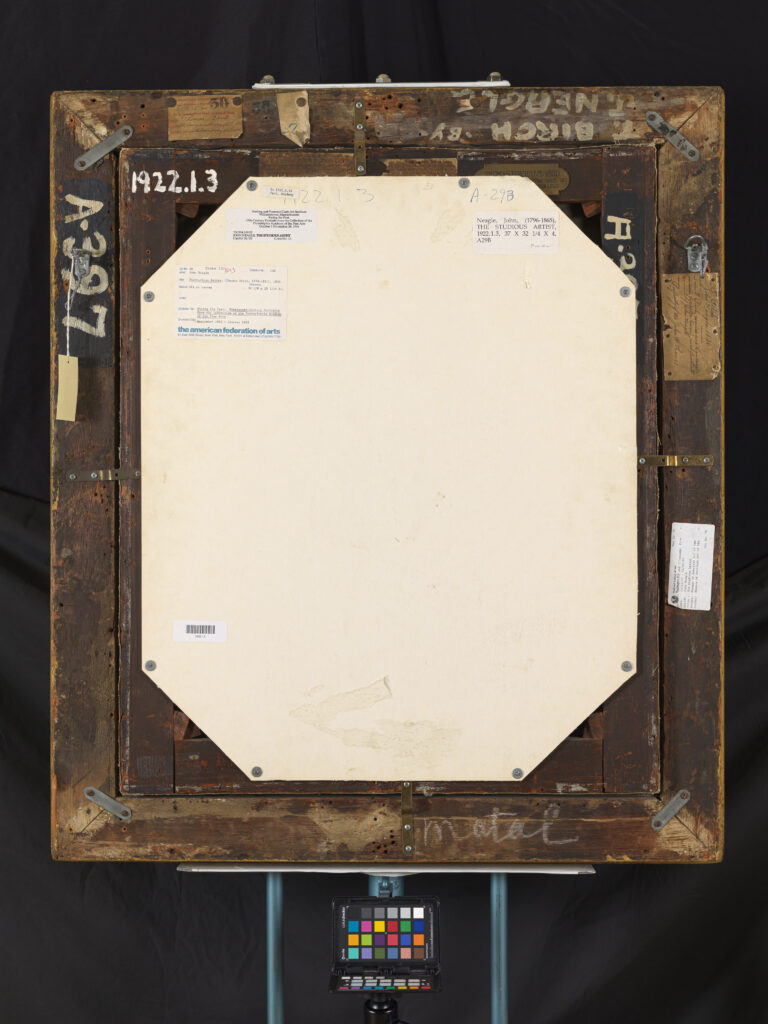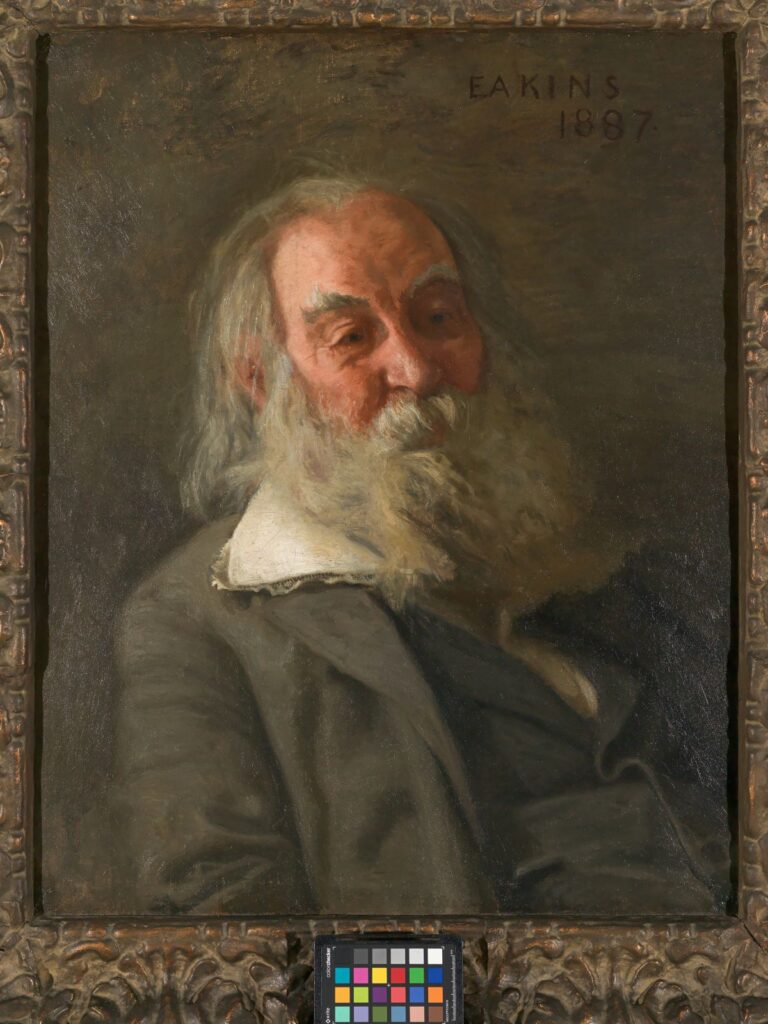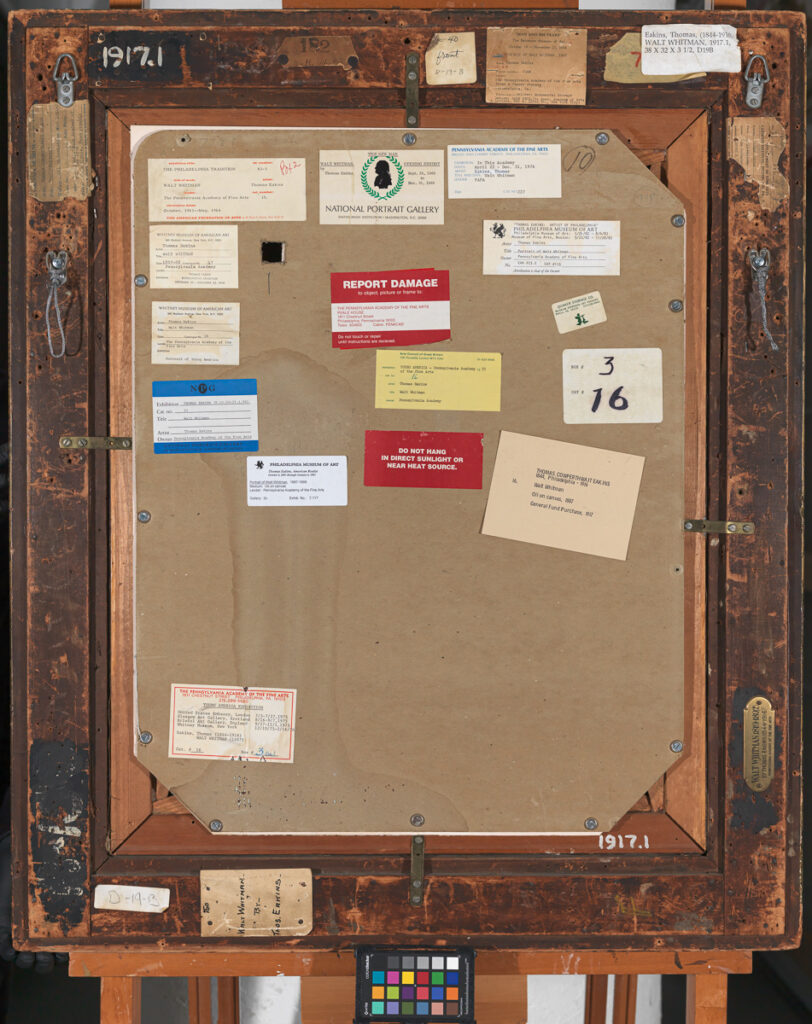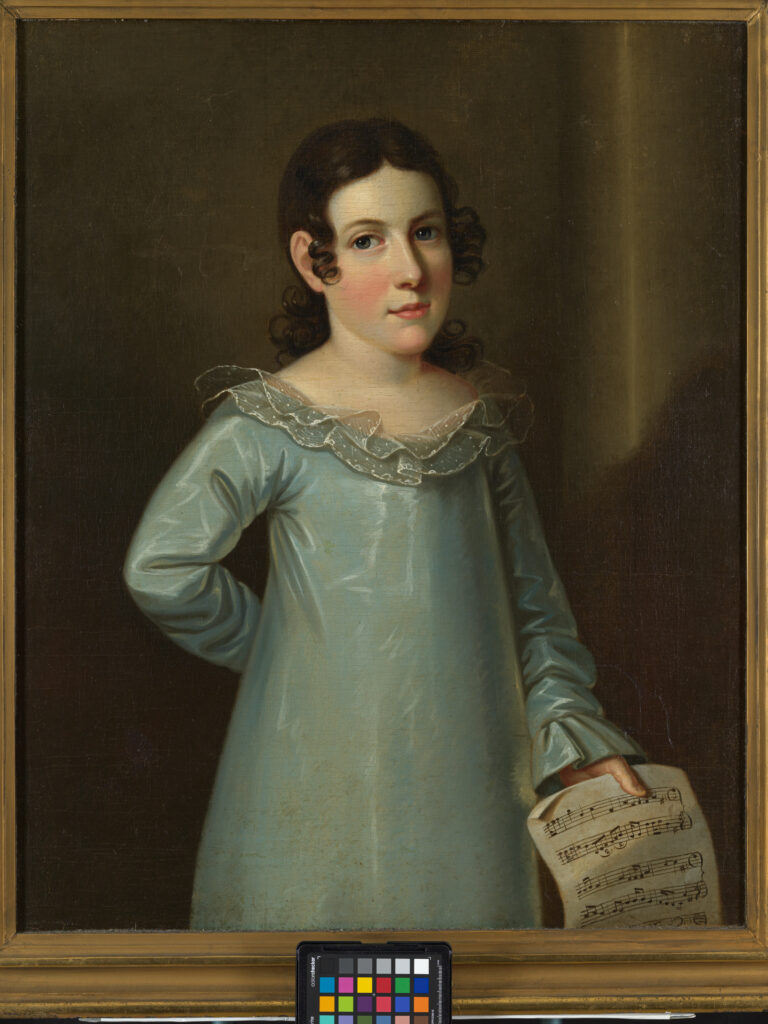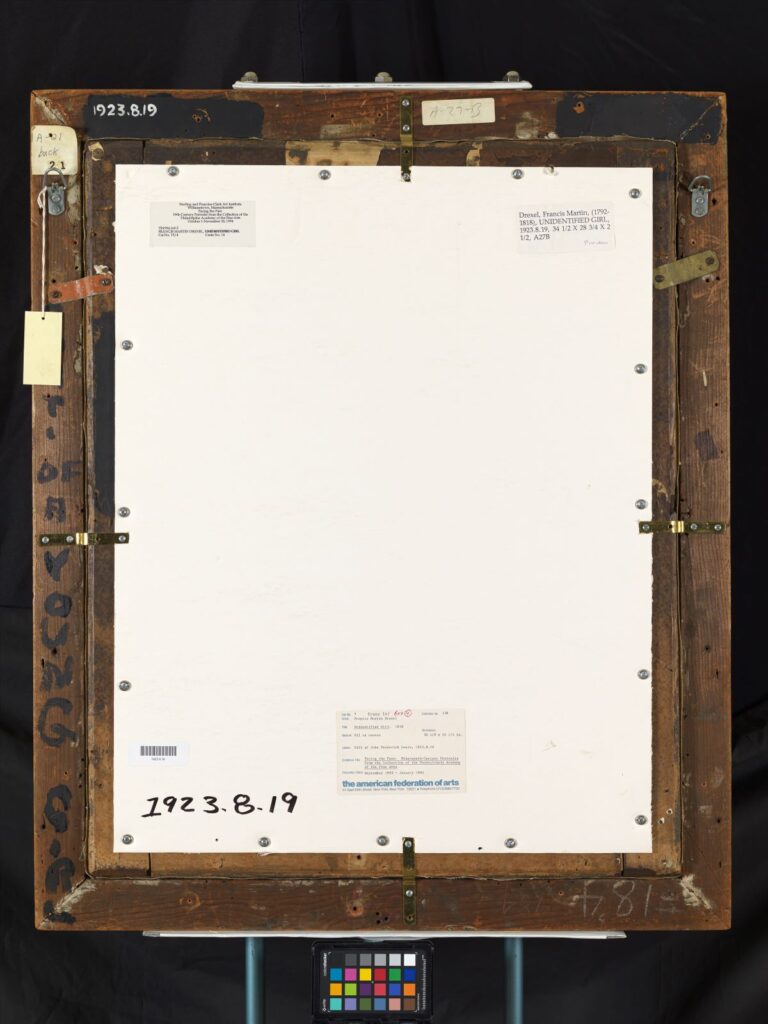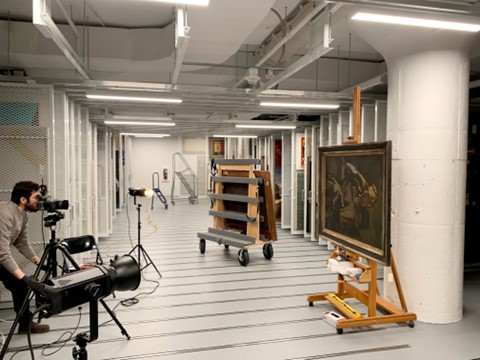Contributed by Zoe Smith, IMLS Project Museum Collections Assistant
In our studio we find immense joy in getting to creatively light sculptures. While works on paper are very evenly lit, there is more room to play around with 3d works. Sculpture busts for example we light as individual portraits, each has distinct features and nuances.
For this plaster bust of Mrs. Allan Clyde Hale by George H. Borst (accession 2013.31.5), we wanted to light it in a dynamic way but keep the lighting balanced enough to match the rest of the collection.
Key Light: The key light is the main light used to light a subject. We decided to use a Rembrandt style lighting technique. This is a commonly used method of lighting in photography that comes from the distinct style of the 17th century Dutch painter Rembrandt Harmenszoon van Rijn.
Fill Light: The fill light’s purpose is to even out shadows and provide a gentle illumination that complements the key light. This was achieved by bouncing the light into the ceiling in front of the subject. This method makes the light incredibly soft and even.
Kicker Light: The kicker light, the final piece of the puzzle, subtly outlines the profile of the subject. The kicker is the most subtle of the lights, but really lets the object stand apart from the background.
As we were planning the lighting, we captured individual exposures with each of the three lights independently. This allowed us to see the subtle differences each light makes.
While the differences may seem minuscule, their cumulative effect makes a dramatic difference when it comes to the final image. Working out these intricate details is some of the most rewarding work when it comes to photographing our extensive collection.
Here are some examples of the lighting techniques that we implemented.
Key Light:

Fill Light:

Kicker Light:

Combined:

About the Institute of Museum and Library Services
The Institute of Museum and Library Services is the primary source of federal support for the nation’s libraries and museums. We advance, support, and empower America’s museums, libraries, and related organizations through grantmaking, research, and policy development. Our vision is a nation where museums and libraries work together to transform the lives of individuals and communities. To learn more, visit https://www.imls.gov/and follow us on Facebook and Twitter.


